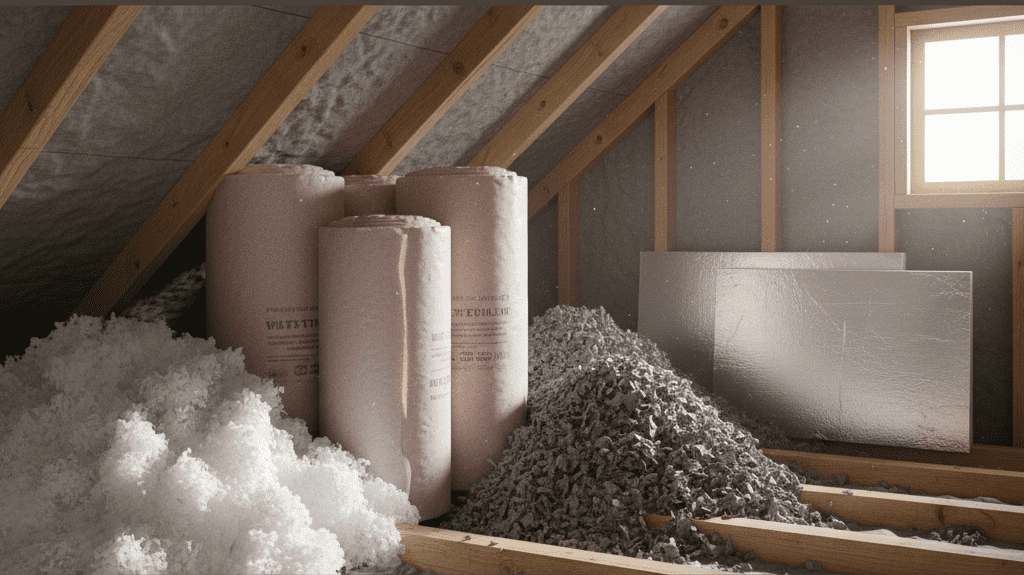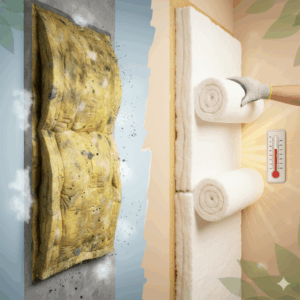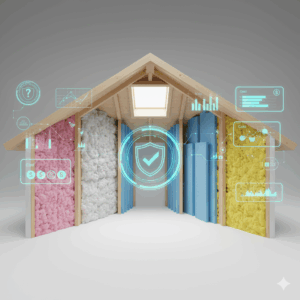Selecting the right insulation is essential for energy efficiency, comfort, and long-term durability. Homeowners must understand the differences between insulation materials, their installation methods, and performance levels. A proper evaluation of different types of attic insulation ensures that the home maintains consistent temperatures, reduces energy bills, and protects against moisture and air leaks. Consulting a professional insulation contractor can provide guidance on the best solutions for each home.
Understanding the Variety of Attic Insulation Materials
Homeowners can maximize energy efficiency and comfort through professional home insulation services. Attic insulation materials vary in composition, installation techniques, and effectiveness. Common types include fiberglass, cellulose, spray foam, and mineral wool. Each type offers unique advantages depending on the home’s structure, budget, and insulation requirements. For homeowners unsure about their attic’s current insulation, Does My Attic Have Enough Insulation? provides clear guidance on evaluating existing conditions.
Fiberglass Batt Insulation
Fiberglass batt insulation is one of the most traditional and widely used types of insulation. It comes in pre-cut panels designed to fit between standard joists. Fiberglass batts are affordable, easy to install, and effective when installed without gaps. However, improper installation can lead to heat loss and uneven performance. Understanding the Pros & Cons Of Attic Insulations can help homeowners make informed choices about fiberglass batts and alternative options.
Blown-In Cellulose Insulation
Blown-in cellulose insulation is made from recycled paper products treated with fire retardants. It is applied using a blower, allowing it to fill irregular spaces and cover gaps effectively. This type of insulation provides excellent thermal performance and is eco-friendly. Comparing materials in Blown-in Insulation vs. Batt Insulation: Pros and Cons helps homeowners weigh the advantages of cellulose against fiberglass or other options.
Spray Foam Insulation
Spray foam insulation is a versatile and high-performance option that expands to seal gaps and cracks. It provides a high R-value per inch and acts as both insulation and an air barrier. Spray foam can be more expensive, but it offers superior energy efficiency and moisture control. Homeowners should consider What is the Costs of Attic Insulation to evaluate the investment versus long-term energy savings.
Mineral Wool Insulation
Mineral wool, or rock wool, is made from natural rock or slag materials. It provides excellent fire resistance, soundproofing, and moisture control. Mineral wool is dense and performs well in both thermal and acoustic insulation applications. Evaluating How Much Attic Insulation Do I Need? ensures homeowners achieve optimal performance regardless of the material chosen.
Reflective and Radiant Barrier Insulation
Reflective insulation or radiant barriers are often used in attics to reflect heat away from the home. These materials are especially beneficial in hot climates where solar heat gain can increase cooling costs. When combined with other insulation types, radiant barriers enhance overall energy efficiency. Homeowners may also consider guidance from When Does Attic Insulation Need To Be Replaced? to understand the lifespan of various materials.
Comparing Insulation Types for Performance
| Insulation Material | R-Value per Inch | Advantages | Disadvantages |
| Fiberglass Batt | 2.9–3.8 | Affordable, easy to install | Must be installed correctly |
| Cellulose Blown-In | 3.2–3.8 | Eco-friendly, fills gaps | Settles over time |
| Spray Foam | 6.0–7.0 | High R-value, seals air leaks | Expensive, professional installation |
| Mineral Wool | 3.0–3.3 | Fire resistant, soundproofing | Higher cost than fiberglass |
Installation Considerations for Attic Insulation
Proper installation is critical to maximize the benefits of insulation. Gaps, compression, or uneven coverage can significantly reduce energy efficiency. Hiring an experienced attic insulation company ensures that materials are installed according to industry standards. Homeowners may also review Attic Insulation Removal Cost: Complete Overview if they plan to replace old or damaged insulation before new installation.
Energy Efficiency and Cost Savings
Insulation is one of the most cost-effective home improvements for reducing energy bills. Well-installed insulation reduces heating and cooling needs, maintains consistent indoor temperatures, and enhances the lifespan of HVAC systems. Homeowners should refer to What is the Costs of Attic Insulation for detailed insights on budgeting for different insulation types.
When to Replace or Upgrade Attic Insulation
Insulation does not last forever. Over time, it can settle, become compressed, or lose effectiveness due to moisture or pest damage. Homeowners can monitor energy bills, comfort levels, and visible attic conditions to decide if upgrades are needed. When Does Attic Insulation Need To Be Replaced? provides a timeline and conditions indicating the need for replacement.
Maintenance and Long-Term Considerations
Regular inspections and occasional upgrades maintain insulation effectiveness. Ensuring no gaps, moisture accumulation, or pest intrusion keeps homes energy-efficient and comfortable. Partnering with a professional attic insulation contractor ensures ongoing performance and safety for all insulation types.
Conclusion
Understanding attic insulation types is crucial for homeowners seeking energy efficiency, comfort, and long-term home protection. From fiberglass batt to spray foam and mineral wool, each material has unique advantages. Selecting the right insulation and ensuring professional installation provides consistent temperatures, reduces energy costs, and protects the home structure. For expert attic insulation services, reliable installation, and professional guidance, trust Guardian Home Energy for complete solutions.
FAQs
- What are the best types of attic insulation for energy efficiency?
Fiberglass batt, cellulose, spray foam, and mineral wool all offer strong energy-saving benefits depending on the home’s needs.
- Can I install attic insulation myself?
Some insulation types can be DIY, but professional installation ensures proper coverage and compliance with safety standards.
- How do I know which attic insulation type is right for my home?
Consider attic layout, climate, budget, and insulation performance. Consulting a professional helps determine the best choice.
- How long does attic insulation last?
Lifespan varies: fiberglass and cellulose typically last 20–30 years, while spray foam may last longer with proper maintenance.
- Do I need to remove old insulation before upgrading?
Removal is recommended if the existing insulation is damaged, compressed, or contaminated.





